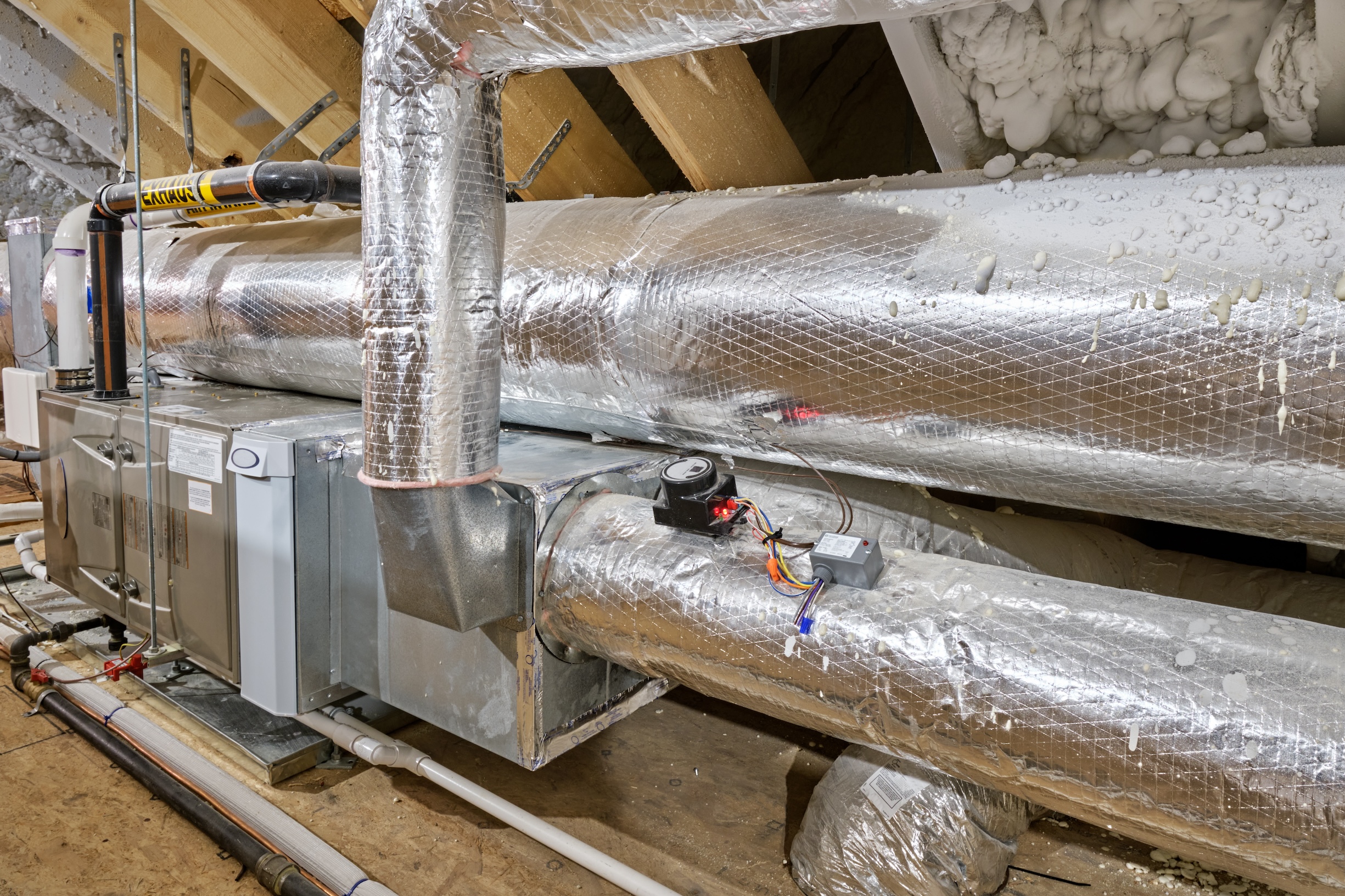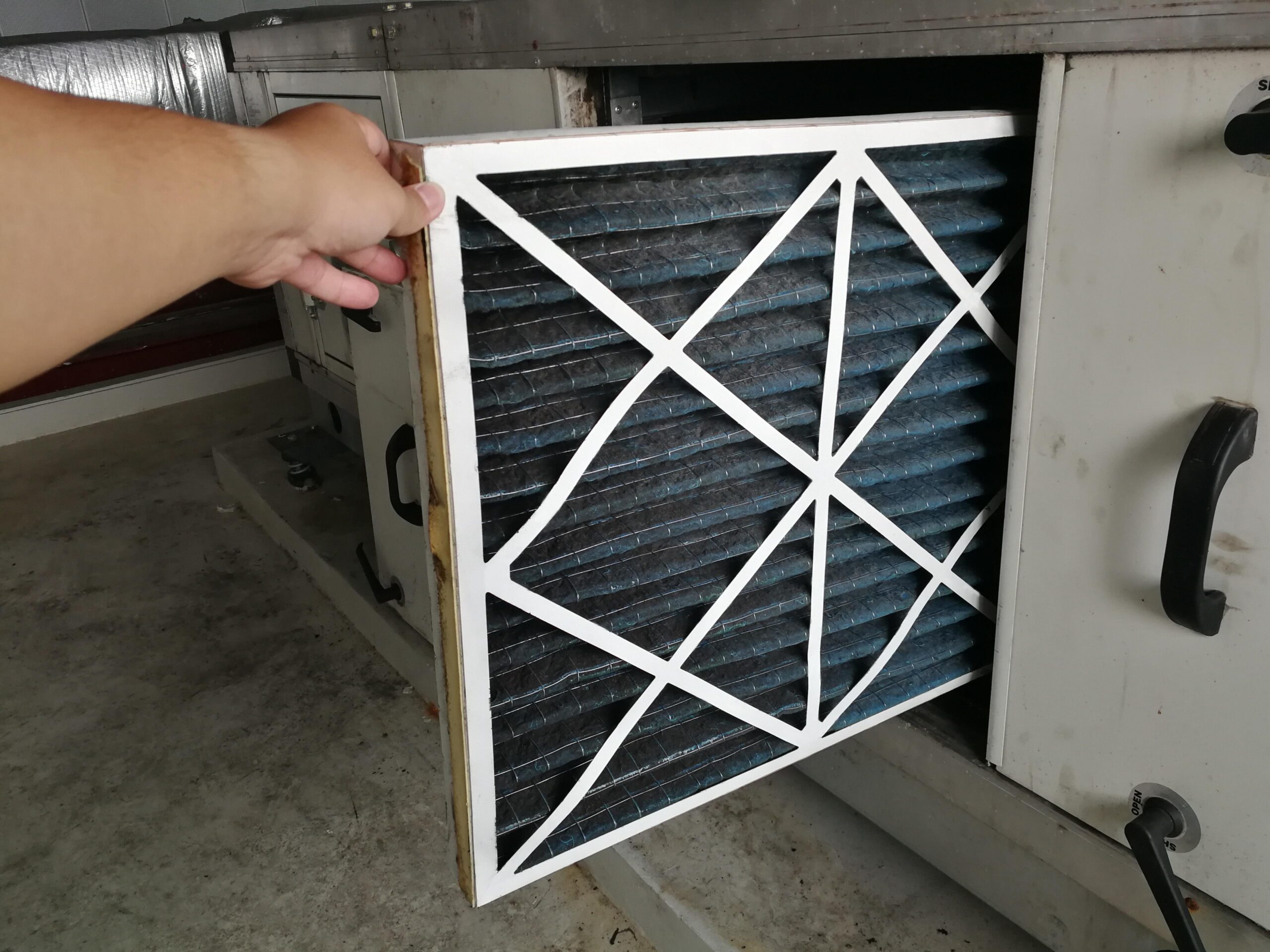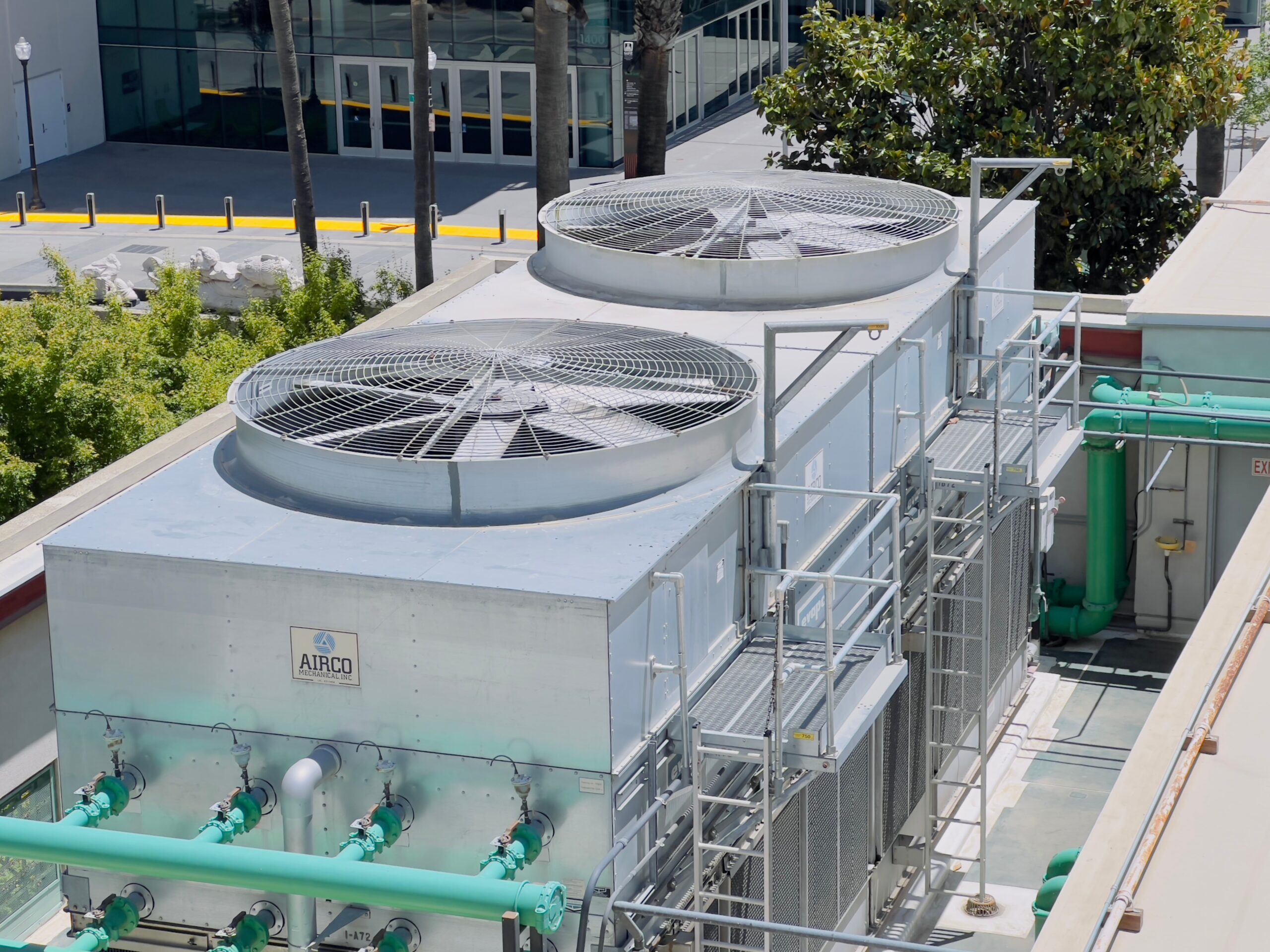Why is My AC Unit in the Attic Leaking Water?

When your air conditioner unit in the attic starts leaking water, it can quickly escalate from a minor inconvenience to a major problem. While it’s normal for an AC to produce water through condensation, it should typically be safely directed into a drain pan and out through a drain line. However, if you notice water leaking outside the unit, it could indicate several potential issues.
Water leaks can lead to musty smells, puddles around the unit, water damage, or even dripping from your ceiling or down your walls. Understanding why your AC unit leaks water in the attic is crucial to preventing extensive damage to your home.
In this blog, we’ll explore the common causes of water leaks in attic-based AC units and provide solutions to help address and prevent this issue.
Common Causes of AC Water Leaks in the Attic
Understanding the common causes of an AC unit leaking water in the attic can help you identify and address issues before they lead to significant damage. Here are some of the most common reasons why your attic AC unit might be leaking water:
Improperly Installed or Dysfunctional Pan Switch
An improperly installed or dysfunctional pan switch can be a significant cause of water leaks in your attic from the air conditioner. A pan switch, often referred to as a float switch, is a safety device installed in the drain pan of your AC unit. Its primary function is to detect the presence of water in the drain pan and shut off the unit to prevent overflow if the water levels get too high. The pan switch is an essential component to protect your property from potential water damage.
If the pan switch is incorrectly installed, it may not function as intended. Here are some common installation issues:
- Incorrect Positioning: The pan switch must be positioned correctly in the drain pan to accurately detect water leaks. If installed too high or too low, it may not trigger at the appropriate time, leading to overflow.
- Loose Connections: Improper installation can result in loose electrical connections, which can cause the switch to fail. A malfunctioning switch won’t be able to shut off the AC unit when necessary, allowing water to continue accumulating and potentially leak out of the drain pan.
- Faulty Wiring: Incorrect wiring during installation can prevent the pan switch from functioning. Ensuring that the wiring is done correctly and securely is crucial for the switch to operate effectively.
In addition to improper installation, a dysfunctional pan switch can also lead to significant water damage in your attic by failing to shut off the unit when the pan is full. This can lead to water leaking into attic insulation, flooring, and even through the ceiling, resulting in costly repairs and potential mold growth.
Regular maintenance and inspection of the AC unit and its components by a knowledgeable technician can help prevent these issues.
Damaged Drain Pan
The drain pan is critical in collecting and directing the condensation produced by your air conditioner. Located beneath the evaporator coil of your AC unit, the drain pan is designed to catch the condensation that forms as warm air passes over the cold coils. The water is then directed to the drain line, which is safely carried away from the unit and prevents it from spilling over into your attic.
Over time, various factors can contribute to the damage or degradation of the drain pan:
- Corrosion and Rust: Older drain pans, especially those made of metal, are prone to rust and corrosion due to constant exposure to water. This can create holes or weak spots in the pan, allowing water to leak through.
- Cracks and Breaks: Plastic drain pans can develop cracks over time due to wear and tear or exposure to extreme temperatures. Even a small crack can lead to significant water leakage.
- Physical Damage: Improper handling during maintenance or installation, or damage due to an attempted DIY fix, can cause damage to the drain pan. Dropping tools or heavy objects on the pan can create dents or punctures that compromise its integrity.
Taking proactive steps can help you prevent and address drain pan damage. Scheduling routine maintenance with a professional HVAC technician can ensure the drain pan is inspected and cleaned regularly to remain in good condition. If necessary, due to severe damage or age, the technician can replace it with a more durable plastic or corrosion-resistant metal pan.
Clogged Drain Line Leading to Water Overflow
A clogged condensate drain line is one of the most common causes of water leaks from an AC unit in the attic. The drain line is essential for transporting the condensation collected by the drain pan away from the unit and out of your home. When this line becomes clogged, it can lead to water backing up and overflowing, causing significant damage.
Several factors can contribute to a clogged drain line:
- Debris and Dirt: Over time, dirt, dust, and debris can accumulate in the drain line, especially if the air filter is not regularly cleaned or replaced. This buildup can create a blockage, preventing water from flowing through the line.
- Mold and Algae: The moist environment inside the drain line is ideal for mold and algae growth. These can form along the walls of the drain line, gradually leading to a blockage that impedes the water flow.
- Poor Maintenance: Lack of regular maintenance can allow small blockages to grow into larger clogs. Regular inspection and cleaning are essential to keeping the drain line clear.
Preventive measures and regular maintenance can help you avoid the problems associated with a clogged drain line. An HVAC professional can inspect and clean the drain line as part of your routine maintenance.
Failed Condensate Pump
The condensate pump in your air conditioner helps remove the condensation collected by the drain pan, especially in situations where gravity alone cannot facilitate proper drainage. The pump is designed to automatically activate when the water level in the reservoir reaches a certain point, sending the water through the condensate drain line to the outside of the home.
Several factors can contribute to the failure of a condensate pump:
- Mechanical Wear and Tear: Like any mechanical device, condensate pumps can wear out over time. Moving parts such as motors and impellers can become less effective or stop working altogether, leading to pump failure.
- Electrical Issues: Problems with the electrical components, such as wiring, switches, or the motor, can cause the condensate pump to malfunction. Electrical failures can prevent the pump from activating or operating correctly.
- Blockages and Debris: Debris, dirt, or algae can clog the pump. Impeding its ability to move water. A clogged pump can overheat or fail to activate, leading to water buildup in the drain pan.
- Improper Installation: An improperly installed condensate pump may not function correctly. Incorrect positioning or poor connections can prevent the pump from effectively moving water.
A failed condensate pump can result in water leaking into the attic, damaging insulation, flooring, and ceilings; mold and mildew growth; and excess water and humidity that affect the efficiency of your AC unit. Regularly inspecting and maintaining your AC can keep it functioning properly, ensuring all electrical components are secure and free of damage and the pump is cleaned of debris, dirt, or algae.
Frozen Coils
The evaporator coils in your air conditioning system absorb heat from the air. However, when these coils freeze, excessive water production can result once the ice melts, resulting in water leaks. Located inside the indoor air handler, these coils contain refrigerant that absorbs heat from the indoor air, where the refrigerant evaporates and cools the air that is circulated throughout the home.
Several factors can cause the evaporator coils to freeze:
- Low Refrigerant Levels: Low refrigerant levels can cause the pressure in the evaporator coils to drop, leading to excessively low temperatures and causing moisture on the coils to freeze.
- Restricted Airflow: Proper airflow is essential for the evaporator coils to function correctly. If airflow is restricted due to dirty air filters, blocked vents, or issues with the blower fan, the coils can become too cold and freeze.
- Dirty Coils: Dirt and debris on the coils can act as an insulating layer, preventing proper heat exchange. This can cause the temperature of the coils to drop too low and lead to freezing.
- Thermostat Issues: A malfunctioning thermostat that fails to regulate the temperature properly can cause the AC unit to run excessively, leading to frozen coils.
Frozen coils can lead to several problems, including water leaks, mold and mildew growth, and reduced efficiency. Taking proactive steps can help prevent and address frozen coils, such as regularly replacing your air filters, keeping vents unobstructed to allow proper airflow, and scheduling regular maintenance with a professional HVAC technician.
How to Stop Your Attic AC Unit from Leaking Water
Discovering water leaking inside from your AC unit can be alarming, but taking immediate action can help prevent further damage to your home. While it’s essential to address the issue quickly, it’s equally important to know when to call a professional to ensure the problem is properly resolved. Here’s what you should do if you find your air conditioner leaking in the attic:
Turn Off the AC Unit
The first step is to turn off the system. Continuing to run the unit can cause more water to accumulate and potentially damage your home further. Shutting it off will also prevent the risk of electrical hazards associated with water and electricity.
Clean Up Excess Water
After turning off the AC unit, clean up any standing water around the unit and in the affected area. Use towels or a wet/dry vacuum to remove water and prevent it from causing damage to your floors, walls, or ceiling. Drying the area thoroughly can also help prevent mold and mildew growth, which can occur quickly in damp conditions.
Remove the Filter & Check for Ice Buildup
Carefully remove the air filter from your AC unit and inspect the evaporator coils for ice buildup. If you see ice, do not attempt to remove it yourself. Allow the ice to melt naturally while the unit is turned off, and avoid using sharp objects or heat sources to speed up the process.
Verify Drain Connections
Check the drain pan and drain the line for any obvious signs of blockage or disconnection. Ensure that the drain line is securely attached and there are no visible obstructions. However, refrain from clearing any clogs or performing repairs yourself, as improper handling can lead to further damage or complications.
Contact an HVAC Professional
Once you’ve taken these initial steps, contact a professional HVAC technician to inspect and repair your AC unit. A qualified technician can diagnose the cause of the water leak and perform the necessary repairs to prevent it from happening again.
Preventing Future AC Water Leaks in Your Attic
Regular maintenance and proactive measures can help you avoid the common causes of leaks and ensure your AC unit operates smoothly. One of the most effective ways to prevent water leaks is to schedule regular maintenance with a professional HVAC technician. During these visits, they will inspect and clean the drain line, check the drain pan, test the condensate pump, monitor refrigerant levels, and clean the coils.
In addition to professional maintenance, you can perform the following:
- Regularly replace air filters
- Keep the area around the unit clear and free from obstructions
- Monitor your home’s humidity levels and use a dehumidifier if necessary
- Install a programmable thermostat to maintain consistent temperatures
- Remain vigilant and watch for potential signs of a water leak
For additional protection, consult with the HVAC professional to ensure the unit was installed correctly and have them install a secondary drain pan as an extra layer of defense against leaks. Be sure to discuss available maintenance agreements to get the plan that fits your needs.
Keep Your Home Cool – And Dry – With AC Services from Jack Lehr
Water leaking from an attic AC unit can cause significant damage to your home, but understanding the common causes and knowing how to address them can prevent such issues. From improper installation and clogged drain lines to damaged drain pans, failed condensate pumps, and frozen coils, each potential cause requires prompt attention and professional handling.
If you notice any signs of water leakage, such as musty odors, puddles around the unit, or water stains on the ceiling, turn off the system, clean up the excess water, and contact an HVAC professional immediately.
At Jack Lehr Heating & Cooling, we are committed to helping you maintain a safe and efficient home environment. Our team of experienced technicians is ready to assist with all your HVAC needs, from routine maintenance to emergency repairs.
Contact us today to discuss our available maintenance plans, or schedule your service online and keep your home cool and dry all season long.
Questions or need more information?
Contact Us


We Treat You Like Family
When you choose Jack Lehr Heating Cooling & Electric, you’ll benefit from our:
When you choose Jack Lehr Heating Cooling & Electric, you’ll benefit from our:
- 50+ years of experience
- Our installation and service guarantees
- Top-of-the-line products
- Respect for your home or business
- Financing options
- And much more!



